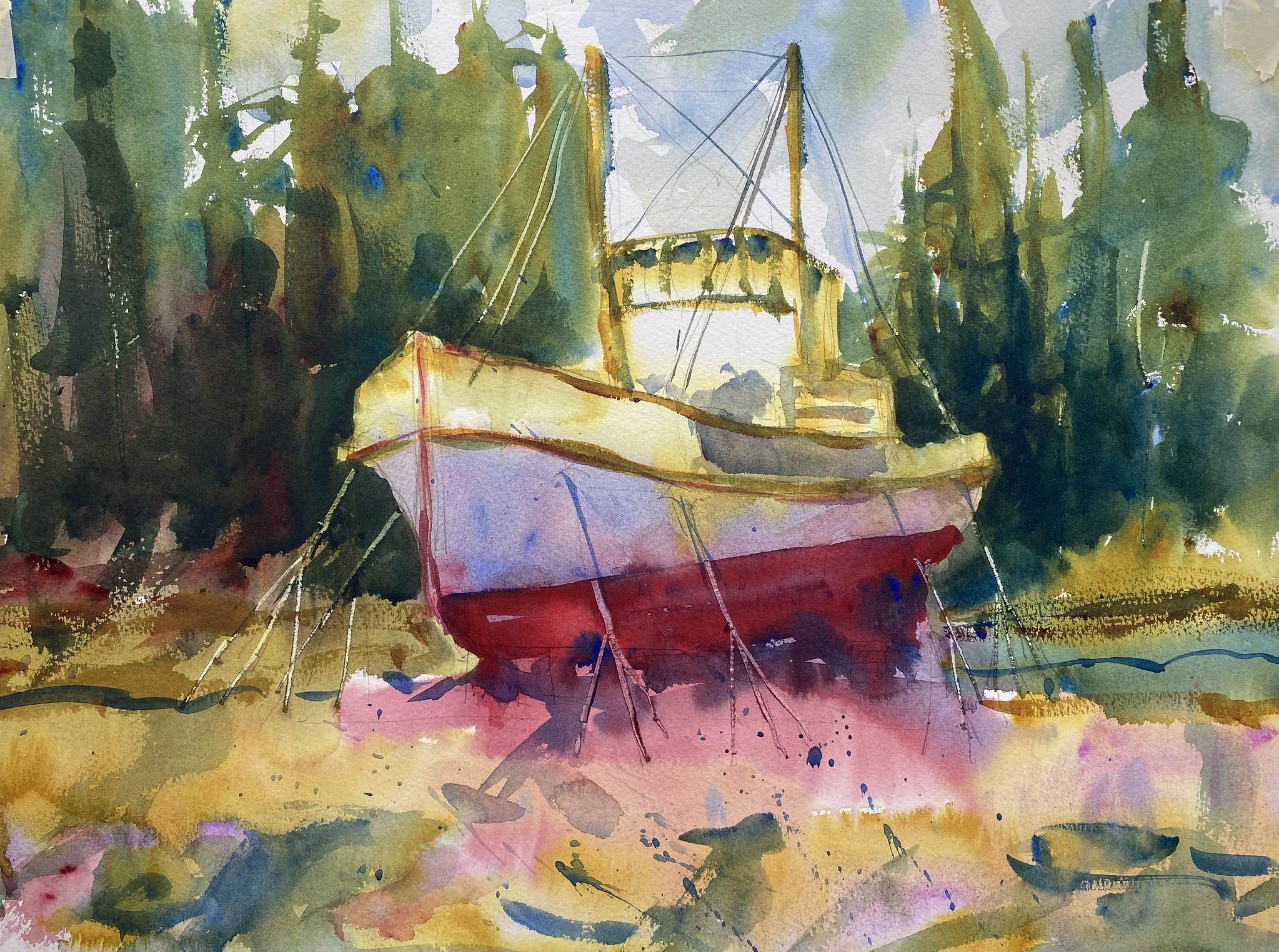
I was challenged to raise my level of painting last week when I attended Eric Wiegardt’s four day watercolor workshop in Long Beach, Washington. Every morning and afternoon, Eric painted a demonstration painting for the twenty-two participants, and gave us enough time to paint the same scene after he did. At 3:30 each day we gathered for a critique of of our paintings. Watching over the shoulder of a master painter is the best way to learn how to paint.
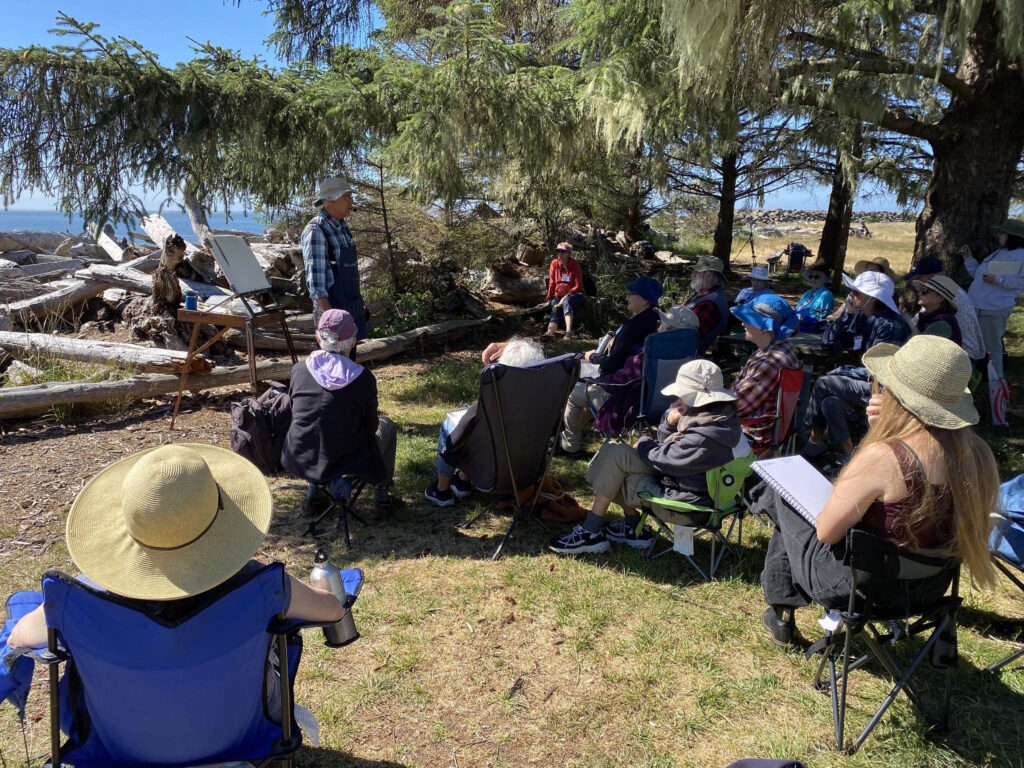
Eric is that rare combination of a great painter and a great teacher. He says there are three goals of a painting. 1. Attract the eye to the painting from a distance. 2. Carry the eye throughout the picture plane. 3. Bring the eye to the area of dominance and hold it there as long as possible.
To achieve the first goal, he uses a few connected shapes and a limited number of values (three to five values are sufficient). He often begins a painting by boldly sweeping in the middle values. Then he moves to the darker values, and last of all he puts in the light values (usually the sky and water). He brings the eye to the area of dominance by increasing the use of detail, color, lines, etc., as he gets near the area of dominance.
That constitutes the majority of his teaching. He keeps it simple and avoids confusing his students with lots of rules or guidelines. Use a big brush, keep your shapes interesting and connected, keep your values clean and limited, keep your paint fresh, and use details only as necessary. Those general guidelines will lead to a good painting.
For his first demo, Eric painted the dramatic cliffs at Cape Disappointment (below). Notice how he’s not bothered by drips and runs in the painting. They make the painting more connected and harmonious as the colors run together.
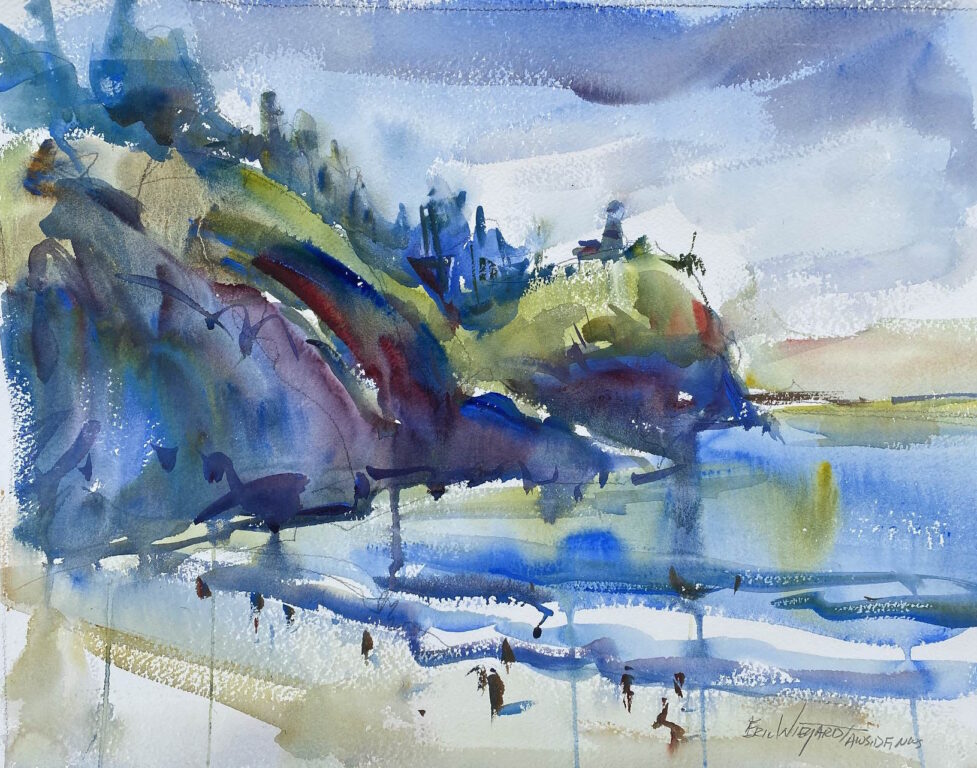
Here’s my attempt to capture the same scene.
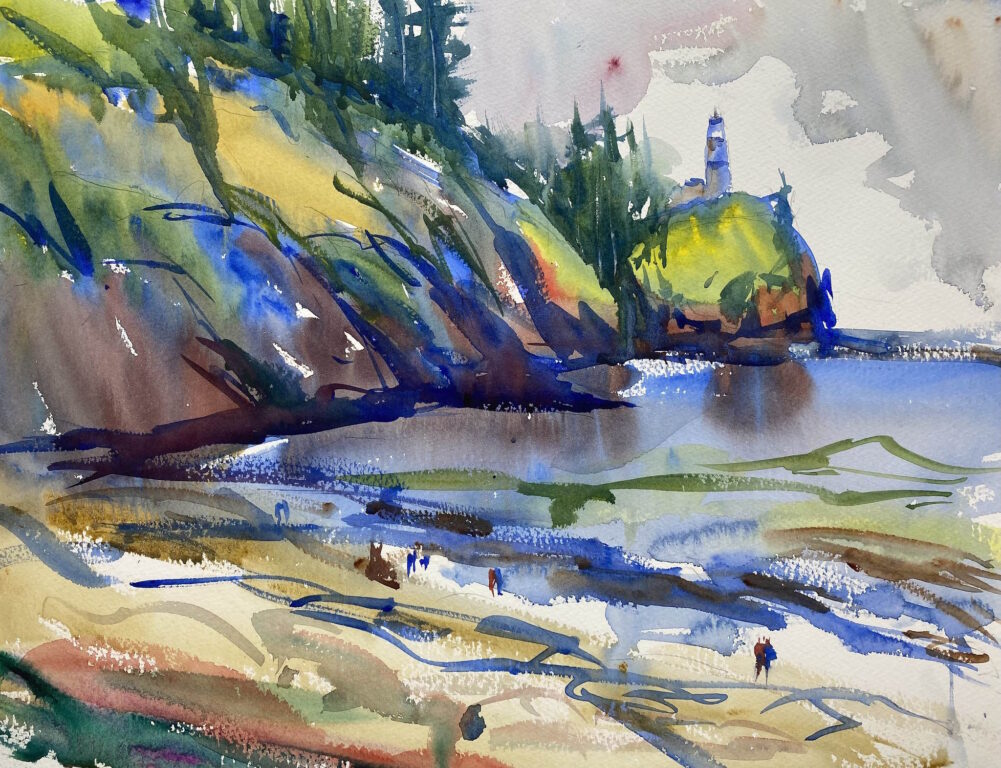
On our second day, we painted an old wooden sailboat in the Ilwaco City Harbor. Eric let the colors of the sailboat run down into the water so that the boat’s reflection was connected to the boat.
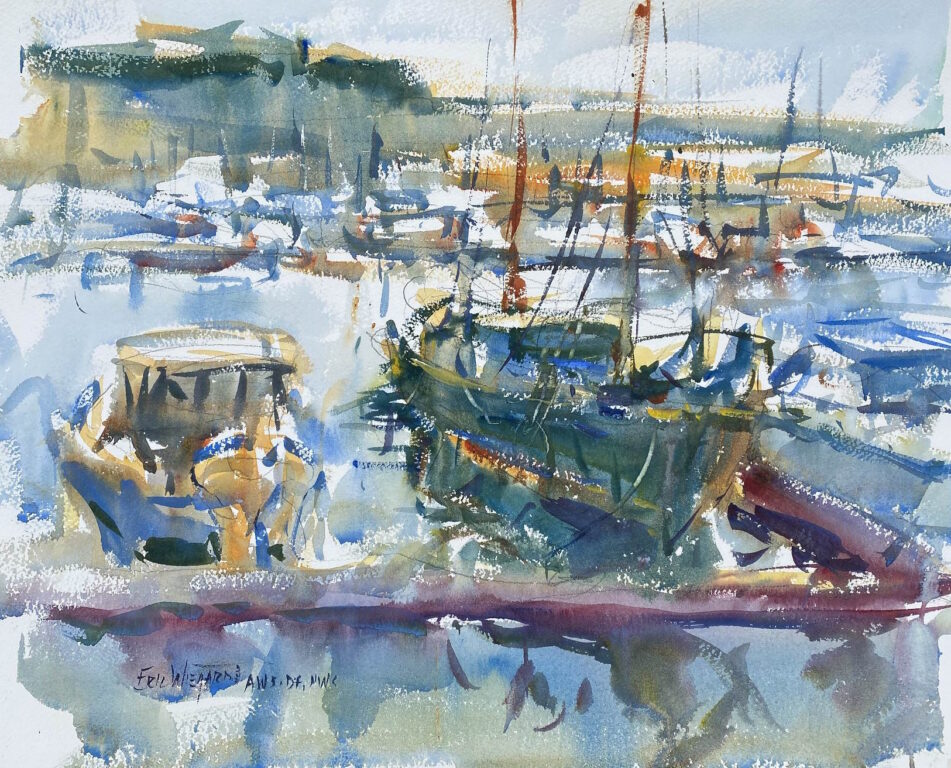
In my first two attempts, I didn’t use enough water in my paintbrush, so the sailboat looked pasty and dry. On my third attempt, I finally got the paper wet and used lots of water in my brush. Success!
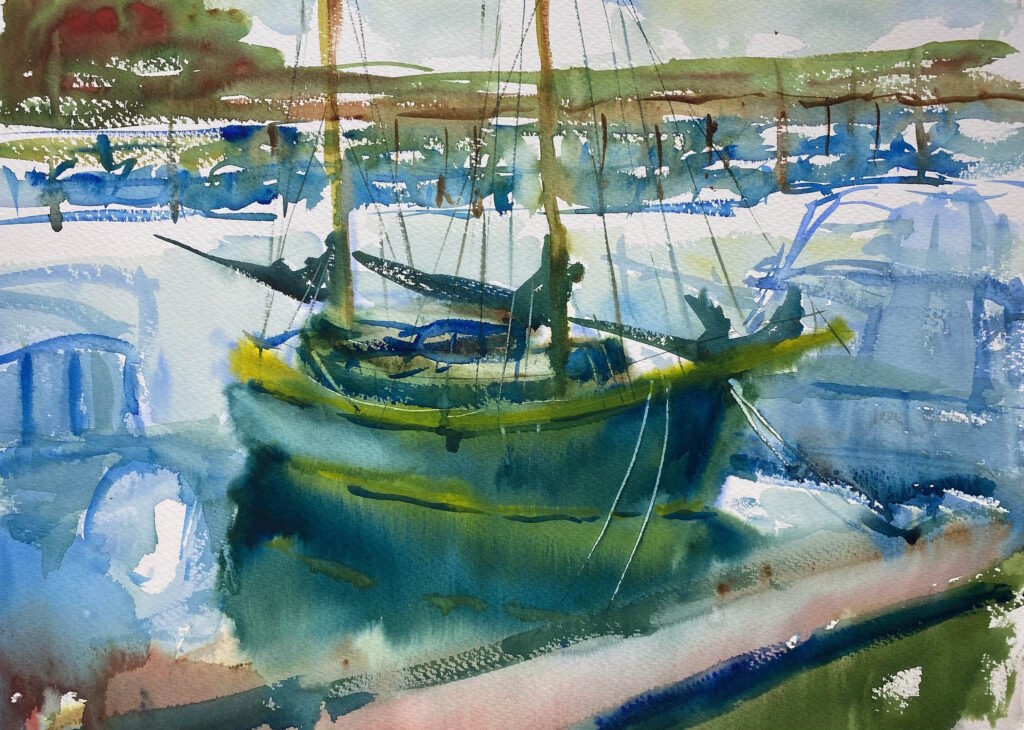
On the third day of the workshop, Eric brought us to the historic community of Oysterville. It was a hot, sunny day, so he chose to paint a copse of roses on a picket fence in a shady lane. It seemed like a complicated subject, but he wasn’t intimidated. He began with wet washes of red, followed by green washes that partially overlapped the red, giving a rich mix of colors for the roses which were still undefined. He cautions against defining your subject too early. He then cut in darker values to bring out the roses, and finally added detail to the roses in his area of dominance.
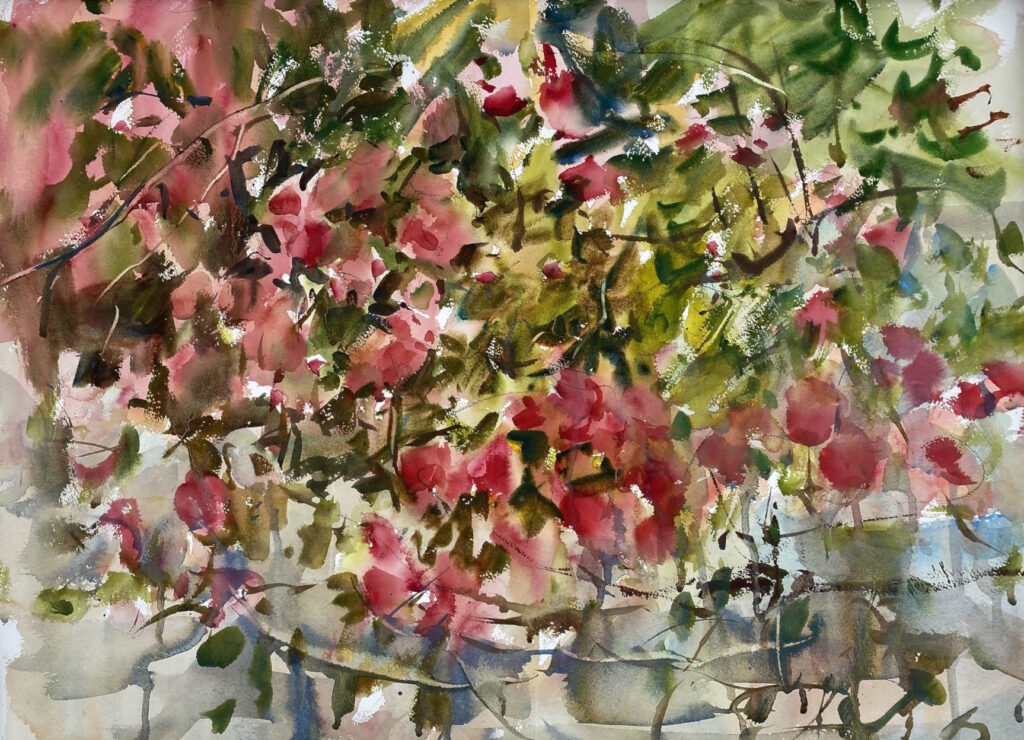
I gamely tried the same subject and was pleasantly surprised to see the red and green washes mix together to produce a rich color. At the critique, Eric suggested that I outline the roses in my area of dominance and add some detail to them. This helped a lot
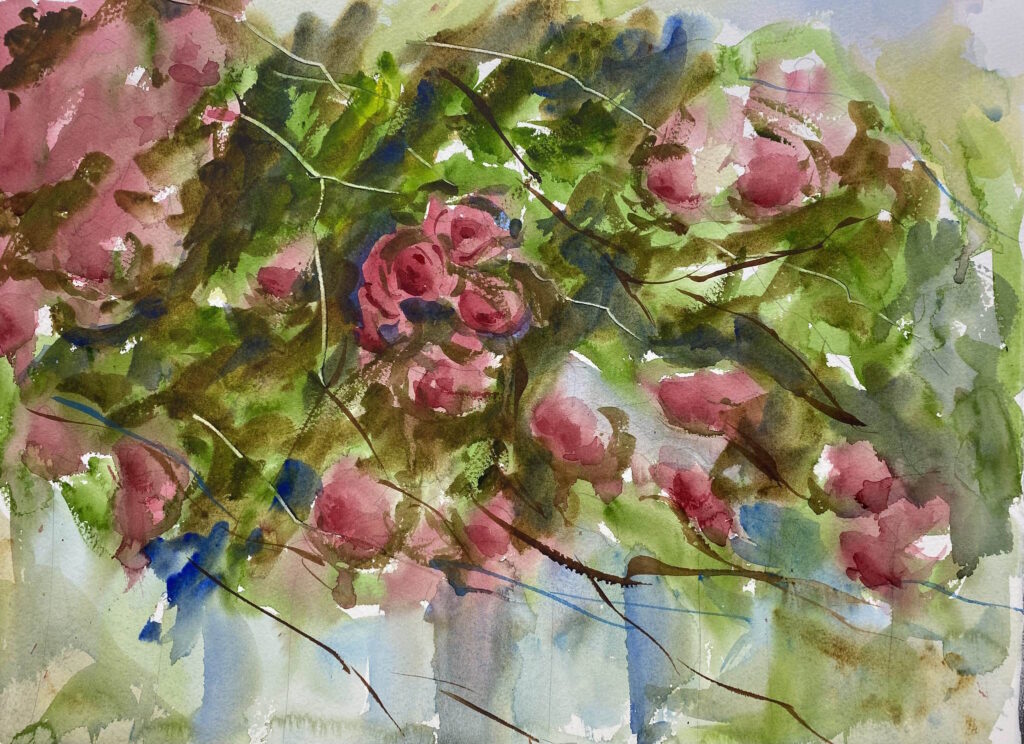
On our last day, we visited the Port of Nahcotta, a working port for the oyster dredges in Willapa Bay. Eric painted the Tokeland, a historic oyster dredge sitting on blocks in a corner of the port. He began by wetting the paper front and back, then he painted the outlines of the boat in yellow, using the brush only (no pencil marks). Then he added the mid-tones in the boat’s hull, allowing them to run down and mix together.
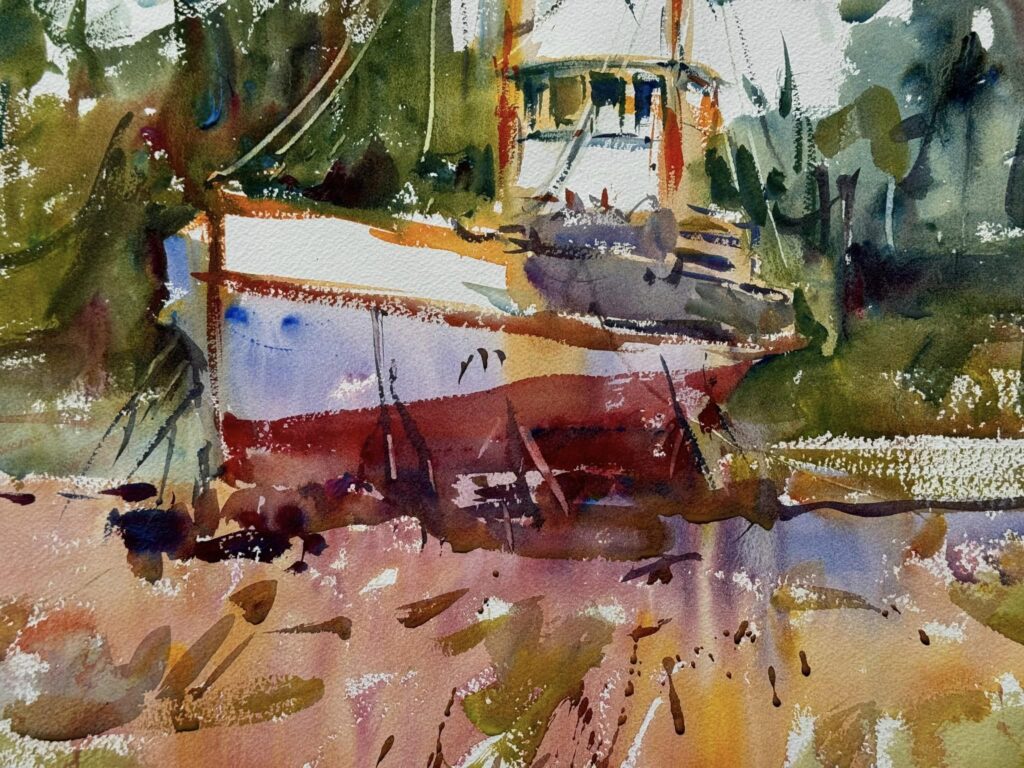
I wet the paper and i was pleased to see the washes running down like Eric’s. Pretty happy with this painting.
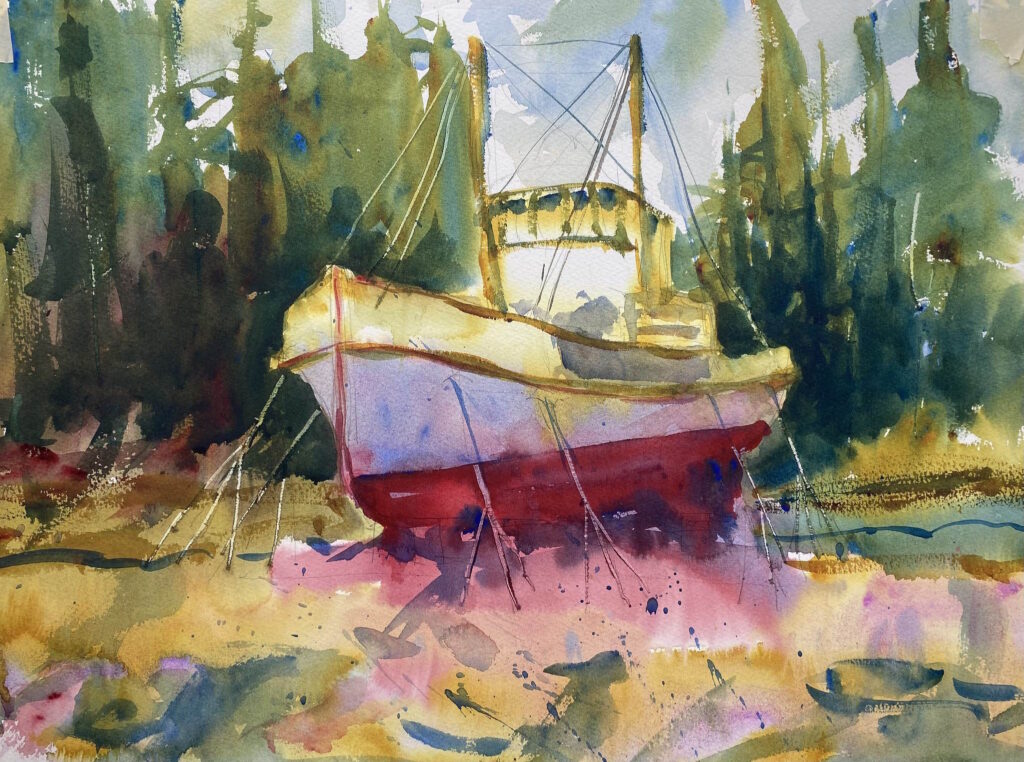
Our group of painters developed a great sense of camaraderie during the workshop as we all struggled to put Eric’s teaching into practice. On Wednesday evening, we were invited to the home of Kathryn Murdock, who pampered us with a delicious dinner of appetizers, spanakopita, salad and dessert. On Thursday evening, several of us gathered at Oysterville Sea Farms for a tantalizing bowl of chowder on the deck overlooking Willipa Bay. It was a great week together.
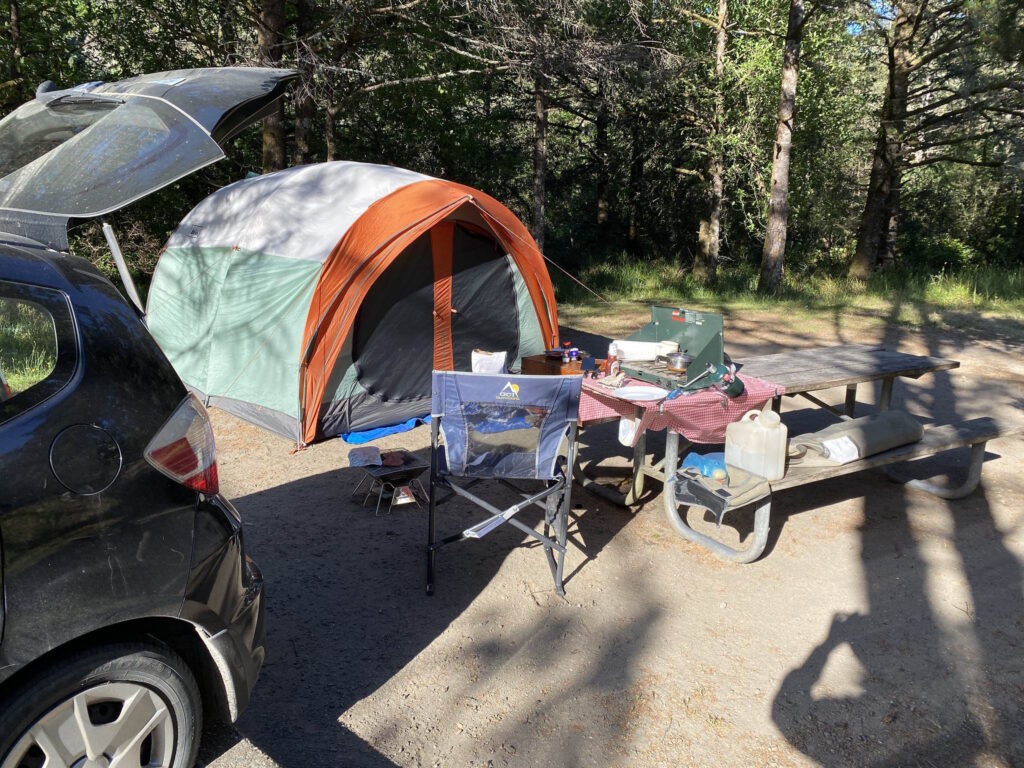
It’s neat to see how much energy, intensity, and concentration you put into your paintings.
Thanks, Nancy! I just love painting watercolors.
I love it when you paint something Iconic like Cape Disappointment because its like seeing it in a whole new and amazing way! Really gives me a good feeling to look at those paintings.
Thanks, Guy! Cape Disappointment is probably one of the most photographed and painted places on the West Coast. I’m glad I got to paint it.
That workshop was a really great opportunity for you. Your work consistently improves and your examples show that. I felt you made those scenes really come alive.
Thanks, Warren! Painting alongside a master painter really helps.